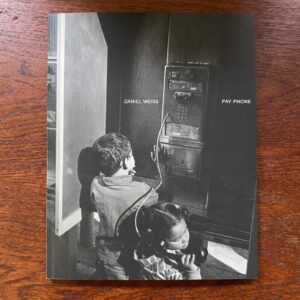JTF (just the facts): A total of 15 color photographs, alternately framed in black/white, and hung against white walls in the main gallery space. All of the works from the Fragile Land series are archival pigment prints, made in 2018. Physical sizes range from roughly 12×10 to 68×41 inches (or reverse), and all of the prints are available in editions of 6. (Installation shots below.)
The exhibit also includes 7 additional works from the Evertime series on view in the smaller project room. These are also archival pigment prints, made in 2018. These prints are sized between roughly 15×17 and 24×28, and are available in editions of 6. (Installation shots below.)
Comments/Context: It’s a commonly held belief that classic artistic genres like the still life are somehow no longer relevant to our fast-paced contemporary world. We just can’t seem to get our heads around the idea that aesthetically perfect arrangements of flowers in overstuffed bouquets or carefully arranged jars, glassware, and fruit on a sparse tabletop can somehow engage the issues of the day in any meaningful manner, and so we assume that this kind of inward looking study of beauty in meticulous detail must therefore be anachronistic.
But in the past decade, Ori Gersht has embraced the still life as just the right vehicle for thinking about the complex interplay of destruction and order that constantly surrounds us. Starting with setups that echo those of the Dutch painting masters of the 17th century, he has experimented with various approaches to inserting disorienting violence. He has exploded flash frozen floral arrangements into thousands of tiny shards. He has shot still life fruits with air rifles, documenting their mesmerizing demolition in super slow motion videos. And he has placed mirrors in front of floral bouquets, only to deliberately shatter those very same mirrors, capturing the crashing splinters of reflection as they fall. In each project, he has found both quiet grace and fractured havoc, his images never quite resolving the dissonance they have so purposefully created.
This show catches up with Gersht’s most recent work, offering examples from two separate but related projects. The Fragile Land series returns to the motif of exploding flowers, but employs a different set of botanical specimens as its subject, adding another layer of meaning beyond the now obvious quick fire destruction. The cyclamen, iris, and Madonna lily are the so-called “flowers of Israel”, symbols of the land and blossoms that were commonly collected in the countryside during Gersht’s childhood. Here they stand as single plants or boughs, only to be violently blown to pieces, the vulnerability (and brutality) of the political situation applied to some its most delicate natural citizens.
While a few of these images have the extra sharpness we associate with Gersht’s ultra high performance technologies, most have a more painterly set of surface qualities. This is a result of the artist making simultaneous exposures with a Polaroid camera using expired stock, the prints then scanned and enlarged to generate the final works. Many of the images have residue from the rollers dragged across the surface, creating black smudges and gestures on the white background pictures, and ethereal blue-green marks on those with black backdrops. And in a few cases, the enlargement process also leads to areas of tactile graininess, further softening the overall look and adding to a more romantic and melancholy mood. These stylistic touches deliberately move away from a focus on the exceptional technical meticulousness on view, encouraging us to move beyond the explosive specifics to something more ephemeral and filled with heavily weighted memory.
The other series presented here applies the same explosive metaphor to the fragmentation taking place in the European Union. With nationalistic tendencies on the rise in many countries, the essential reliance on a single unified approach to governance and economic policy is under threat. Gersht’s works attempt to capture this sense of instability, applying his air rifle destruction to setups that recall the calm still life paintings of Giorgio Morandi. Gersht had replicas made of the bottles, jars, and ceramic vessels found in Morandi’s paintings, and he has arranged and lit them in ways that mimic the original artworks. But when the bullet smashes through the white vases and pastel colored cups, the destruction is highly unsettling, the understated harmony and balance brusquely interrupted. Even more than the exploding flowers, these works feel deliberately provocative and quietly sad, the artfully placed ceramics reduced to shattered rubble in the blink of an eye.
In many ways, this is a show about extending Gersht’s fundamental artistic innovation into new and adjacent areas of exploration. By adding layers of metaphorical connection to the original destructive mechanism, he has attempted to reach beyond the aesthetics of beauty to more layered artistic messages that hit closer to home. While this approach can often lead to artworks that are forced to carry heavy handed declarations, these two bodies of work communicate their unsettled intentions with conceptual directness, demolishing the things (and ideas) we treasure as we stand by and watch in mesmerized, ineffectual wonder.
Collector’s POV: The works in these two shows range in price from $8000 to $24000, based on size. Gersht’s work has only been intermittently available in the secondary markets in recent years. Prices for the few lots that have sold at auction have ranged between $3000 and $25000.
















